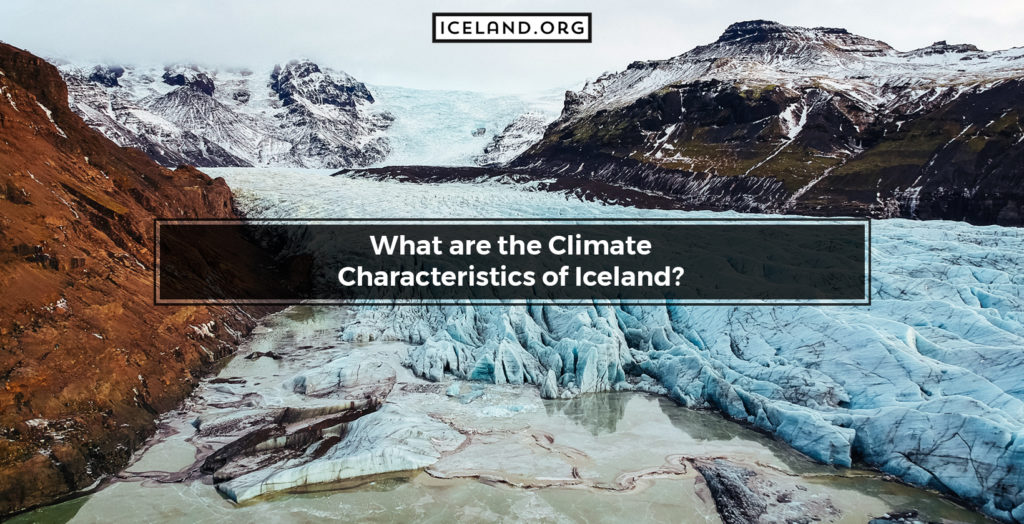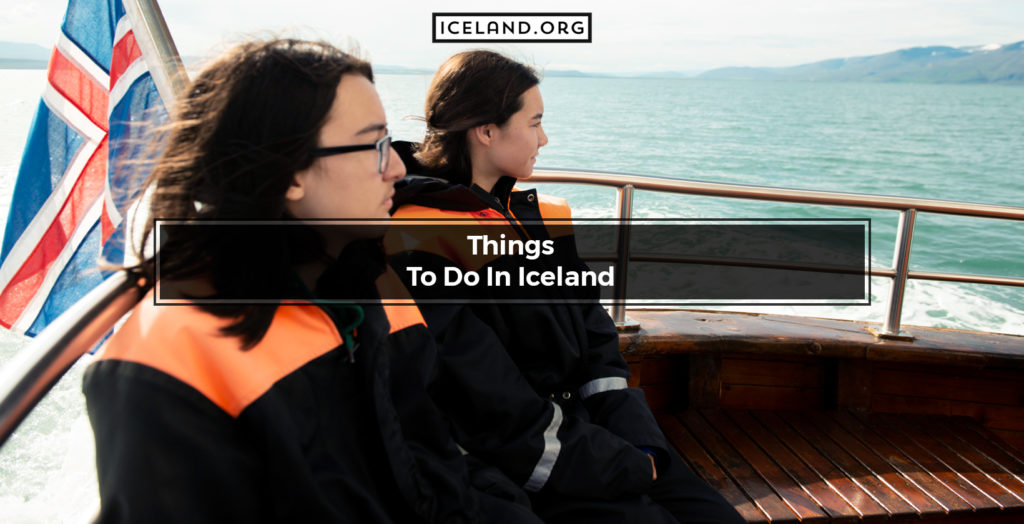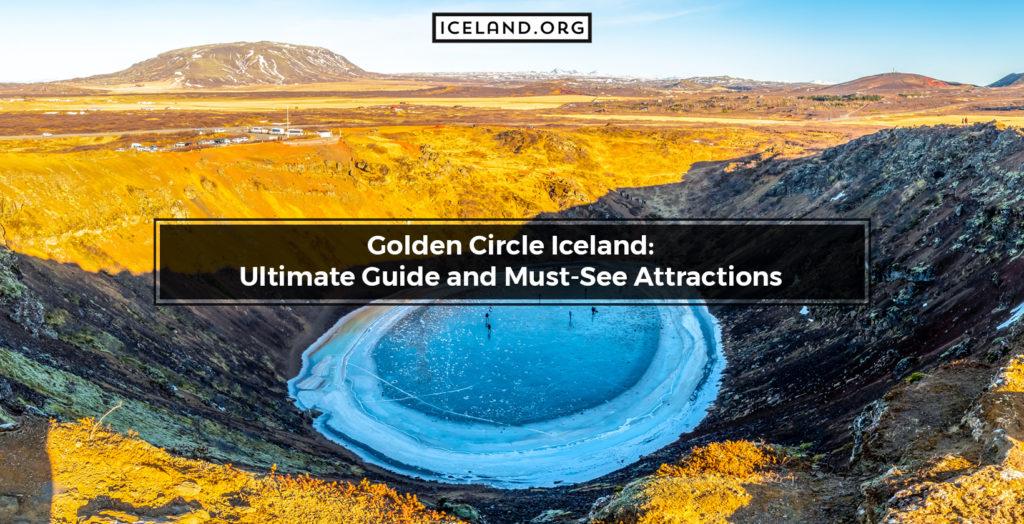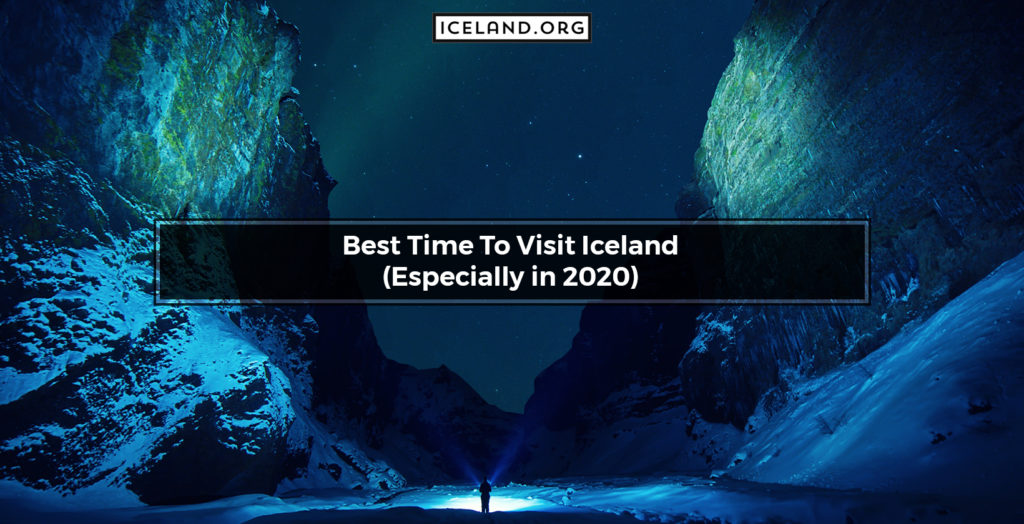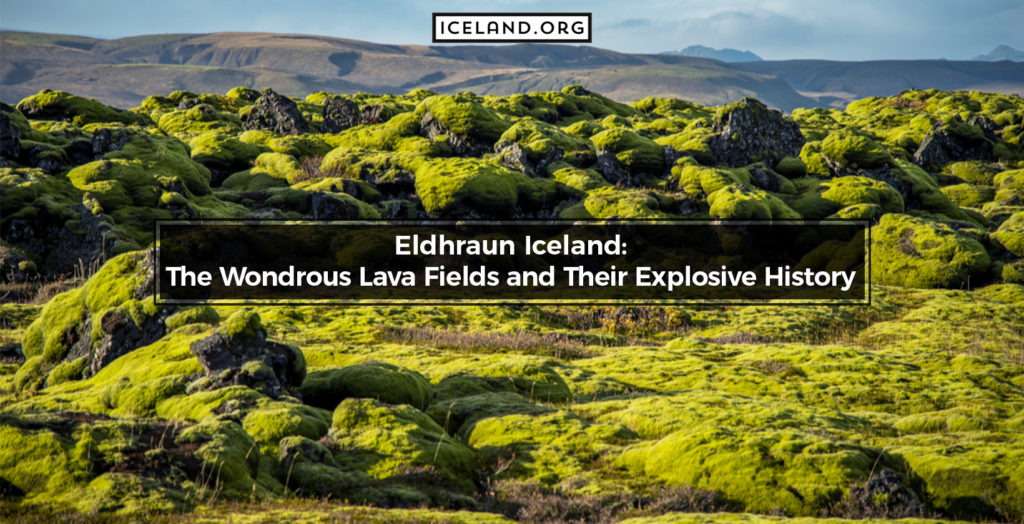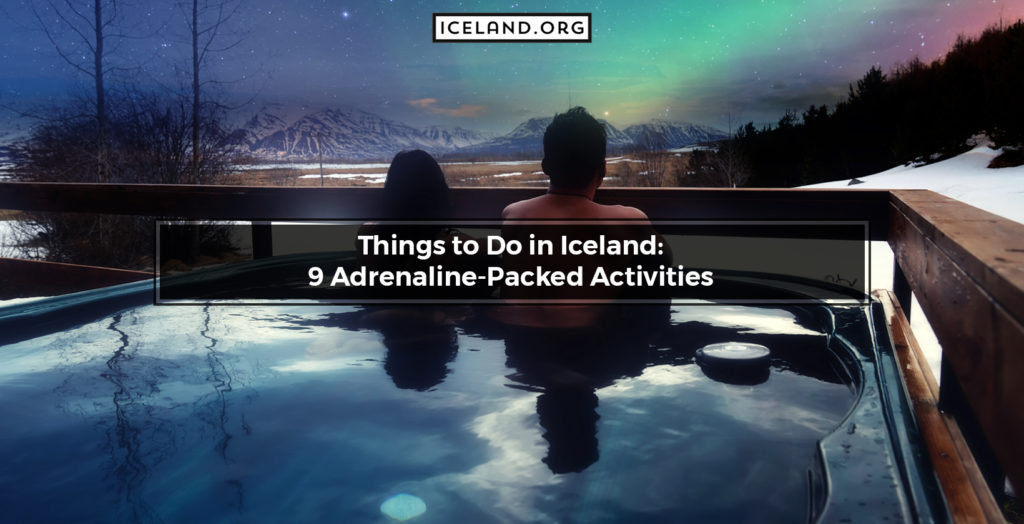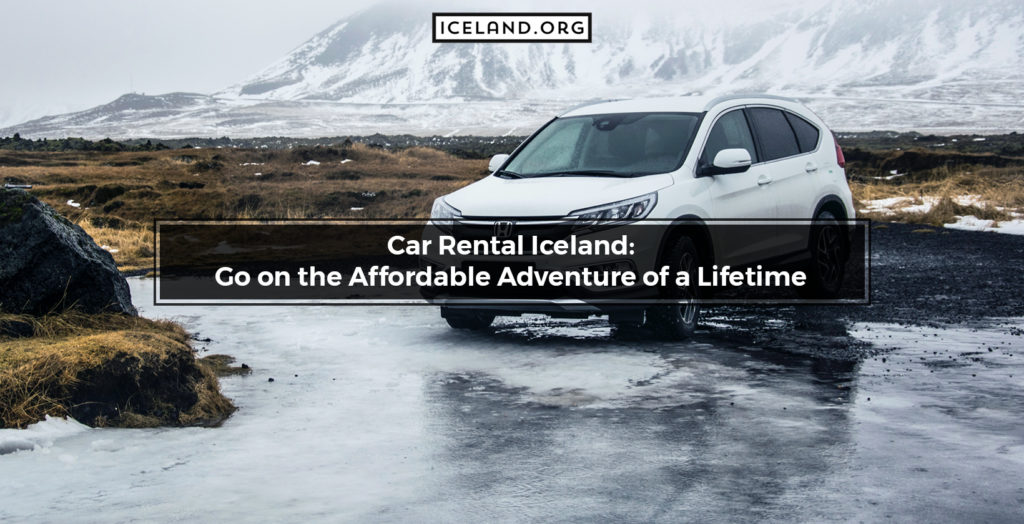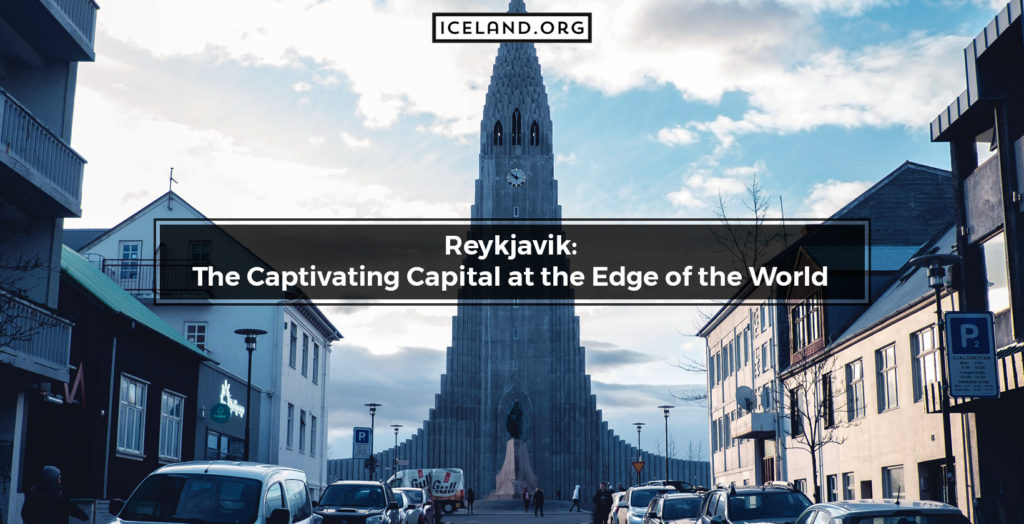The Icelandic climate is best described as windy, cloudy, and perpetually unstable. The ocean’s Gulf Stream somewhat tempers the coldness of the high latitude and the North Pole’s winds. However, despite these warmer flows, the overall climate is cold with sudden weather and temperature changes.
The average precipitation in this Nordic gem is 81.86 mm and is not equally distributed – rain and snow are more abundant in the island‘s southern regions. The capital Reykjavik gets around 800 mm of rain and snow per year, and based on precipitation levels, iceland ranks 34th in the World.
Does Iceland Have 4 Seasons?
Yes, contrary to popular belief, Iceland has four distinct seasons. However, if you are wondering what the climate in Iceland is like, cold and windy would be the correct answers regardless of the season.
This is because even when the landscapes are lush and blooming, the chilly wind and cool air are reminders of Iceland’s proximity to the Arctic Circle. And during the winter season, it is snowy and frosty for as far as you can see.
What are the Seasons in Iceland?
Each season in Iceland has its hallmarks:
- Winter. In Iceland, the winters last from December to March, and during these months, temperatures drop to around 30F (-1C), and daylight is a precious luxury. Precipitation often falls and in the form of hail, sleet, and snow. During winter, everything is blanketed in either snow or ice.
- Spring. Spring starts in March and lasts until June. In spring, the snow cover starts to slowly melt, leaving space for the re-emerging grounds. The daylight increases, the weather becomes warmer, and the wind loses its chilly note. The beginning of spring marks the end of the Northern Lights season.
- Summer. Iceland summer starts in June and lasts until September. The days are still cool, with temperatures ranging between 40F (5C) and 58F (15C) but very long and occasionally wetted by light rains and drizzles. The snow and ice are shaken off and replaced with blooming lupines and green landscapes.
- Fall. Starting from September and lasting to December, fall is a real transition time. The mild temperatures varying between 30F (0C) and 50F (10C) are accompanied by almost continuous rainfall and chilly wind. As the days continue to shorten, the rainfall is gradually replaced with snowfalls and frosts.
What is the Type of Climate in Iceland?
The Gulf Stream brings warmth to the otherwise polar temperatures making the climate in Iceland cold-temperate. Located in the Northern hemisphere, south of the Arctic Pole, Iceland stands at the temperate and polar climate zones border.
Different weather patterns define the Iceland climate by month and season. For example, the springs are crispy with normal daylight hours. The summers are marked by the midnight sun and the lingering cool air. The falls feature overcast skies and wet weather. And the winters are windy, snowy, and with short daylight hours.
How Long is Winter in Iceland?
The winter in Iceland is 26 weeks long. Following the old Norse calendar (which has only two seasons – winter and summer), the winter season starts at the end of October. However, despite the presence of four seasons, it feels like there are two basic kinds of weather in Iceland – winter and winter light.
The hallmarks of the winter months are the icy roads, slippery sidewalks, and constant changes between snow, sleet, and hail. However, sunscreen is a must if spending time outside – the sun rays reflecting from the glaciers are more potent than they look.
How is Spring in Iceland?
The springs in Iceland are extremely unpredictable in terms of weather and temperatures. In the early spring months, the temperatures vary between 30 and 35F (-1 and 2C). As spring moves forward, the days become dryer and warm up to 50F (10C). In spring, days in Ireland are relatively long, the sunrises and sunsets vibrant, and the natural waterfalls are raging because of the melting snow.
Is There Summer in Iceland?
Yes, there is summer in Iceland. The summer season starts in late May or early June and lasts until the end of August. The slight temperature warming and longer days affect the vegetation and have a massive impact on the country’s tourism. Summer is the best time for being outside – enjoying hikes, visiting the Highlands, driving on the F-roads, or simply admiring the lush green landscapes.
What is Iceland Vegetation Like?
The vegetation in the northern parts of Iceland is typical for that of tundra regions and mainly includes mosses, lichens, and sedges. In the southern parts, grasslands, bogs, and marshes are dominant. Low-growing shrubs are abundant and include species like willow, heather, dwarf birch, and wild berries.
Tall trees are hard to find as early settlers used to burn them for cattle and charcoal production, which led to significant deforestation (forests covered 35% of the Iceland land area, and today they cover less than 1%). The only places you can see tall trees are the birch woods Hallormsstaðaskógur and Vaglaskógur.
Today, Iceland has over 470 native subarctic plants – resilient Ice Age survivors capable of thriving in hostile terrains. There are also enthusiastic afforestation efforts with both native and foreign vegetation life.
What do Fruits grow in Iceland?
Fruits are scarce in Iceland, but the geothermally heated greenhouses allow certain fruits to thrive:
- Wild berries – strawberries, raspberries, crowberries, bilberries, brambleberries, and redcurrants are among the few fruits that can grow on Iceland’s grounds without the help of men.
- Tomatoes – one of the most commonly grown fruits in Iceland is tomato. In fact, the country produces so many tomatoes and exports them to other countries.
- Apples – another fruit Iceland exports is apples. In 2020, Iceland sold over 9 tons of locally grown and fresh apples.
- Bananas – the first banana tree was brought to Iceland in 1939 and two years later started bearing fruit. The banana production was on commercial levels for 15 years (1945-1960). Today there are a few banana plants at the University of Agriculture.
What do Vegetables grow in Iceland?
There are a few outdoor crops that can thrive in Iceland – root vegetables and cold weather vegetables. While the harsh weather is a challenge, the untamed terrain is advantageous as it ensures pure products.
- Root vegetables – potatoes, beets, carrots, and rutabaga grow in the ground and are not immediately affected by the above-ground frosty and windy conditions.
- Cold weather vegetables – cabbage and rhubarb are grown either outside or in state-of-the-art greenhouses.
In more recent years, there has been experimental and successful production of organic barley and rapeseed.
How Much Does It Rain in Iceland?
The average precipitation in Iceland is 800mm (31.5 inches) per year. The wetter season lasts from August 26 to April 8 and lasts for an average of 7.4 months. During this period the chances of rain are 42%.
The high rainfall chances are the most significant contributor to Iceland’s unpredictable climate. Rain is more probable to fall in the Southern and Western parts of the island.
Does It Snow in Iceland?
Yes, it snows almost all year round in Iceland, but the peak snowfall periods are Christmas and New Year. The snowing season usually starts in late October and lasts until late April. The average snowfall per year is 101.8 cm.
What is the Wettest Month in Iceland?
Featuring 116.8 mm of precipitation, September is the wettest month in Iceland. Here is the average precipitation per month:
- In January, the precipitation equals 101.6 mm
- In February, the precipitation equals 109.2 mm
- In March, the precipitation equals 93.9 mm
- In April, the precipitation equals 73.6 mm
- In May, the precipitation equals 58.4 mm
- In June, the precipitation equals 53.3 mm
- In July, the precipitation equals 68.6 mm
- In August, the precipitation equals 88.9 mm
- In September, the precipitation equals 116.8 mm
- In October, the precipitation equals 114.3 mm
- In November, the precipitation equals 106.7 mm
- In December, the precipitation equals 104.1 mm.
What is the Least Rainy Month in Iceland?
The least rainy month in Iceland is June (53.3 mm), in which there can only be light rains and drizzles. This summer month is also characterized by temperatures varying between 46F (8) to 54F (12) and a remarkable 21 hours of daylight.
What are the Highest Temperatures in Iceland?
The highest temperature ever was recorded on June 22, 1939, at Teigarhorn in Berufjörður, and it was 86.9F (30.5C). In more recent years, the hottest temperature was recorded on August 24, 2021, in Hallormsstaður, and it was 84.7F (29.3C). In general, the southern parts of the island are much warmer than the northern parts.
What are the Lowest Temperatures in Iceland?
The temperatures in Iceland are lower in the northern parts, where they range between -13 and -22F (-25 and -30C). The lowest temperature ever recorded is -39.5F (-39.7C). As for newer records on May 2, 2013, the automatic weather station at Brúarjökull registered an absolute low of -7.06F (-21.7).
Despite these below-zero numbers, Iceland’s temperatures are not extremely low considering its high latitude. Overall, Iceland is ranked as the 7th coldest country in the World.
What is the Best Time to Visit Iceland?
The best time to visit Iceland is in summer, especially if you want to camp and explore the magnificent landscapes, watch whales, visit national parks, and go on day trips around the Golden Circle.
However, Iceland is breath-taking all-year-round and each season features different weather patterns. Therefore, the best time to visit depends on why you are visiting in the first place.
For example, spring is the best time to experience all four seasons in one visit and enjoy activities like hiking, camping, fishing, and whale-watching. Fall is best for day hikes into the Highlands, watching the icebergs move toward the ocean on glacier boat tours and river rafting.
Finally, winter visits are reserved for seeing amazing natural sights and phenomena such as the Icelandic ice caves and the Northern Lights (Aurora borealis). The best times and places to see the Northern Lights are between September and April in Hofdabrekka, close to the village Vik.
Is it Hard to Live in Iceland because of the weather?
Yes, Iceland’s extreme weather spectrum is definitely a challenge. One of the main challenges is road and sidewalk maintenance. Another challenge is the working hours of shopping centers, restaurants, and stations. The scarce choice of foods in the stores is also tricky.
How Weather Affects the Life in Iceland?
Living on an island just south of the Arctic Circle and in the middle of the North Atlantic Ocean comes with a price. Basically, everything in Iceland has to be imported and taxed, which ultimately affects the standard of living in Iceland.
Therefore, it is safe to say that the Iceland climate has its biggest impact on price tags which are exceptionally high no matter the product or service. However, Icelanders are used to the Iceland weather and climate affecting almost every aspect of everyday life.
And despite the daily challenges and the fact they sometimes get to experience all four seasons in a matter of hours, they are kind, open-hearted, and down to earth. Plus, they are friendly, with 6.8 million tourists visiting Iceland every year.
Gaming Options Napoleons Casino offers a gaming facility with all the latest games including, American Roulette, Blackjack, Three Card Poker and Punto Banco. There’s workshops, seminars, performances, tarot readings, celebrity psychics, yoga, meditation classes and much more! Recommended: Best slots at Ladbrokes Our editors, along with the community of players have hand-picked some of the most outstanding titles available at Ladbrokes casino here. Pesäpallo (béisbol finlandés) 1) Todas las apuestas a Pesäpallo se determinarán en función del resultado obtenido después de las dos primeras rondas (entradas).
